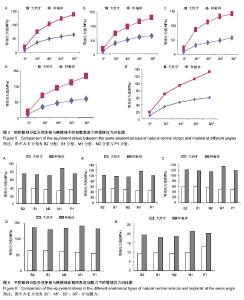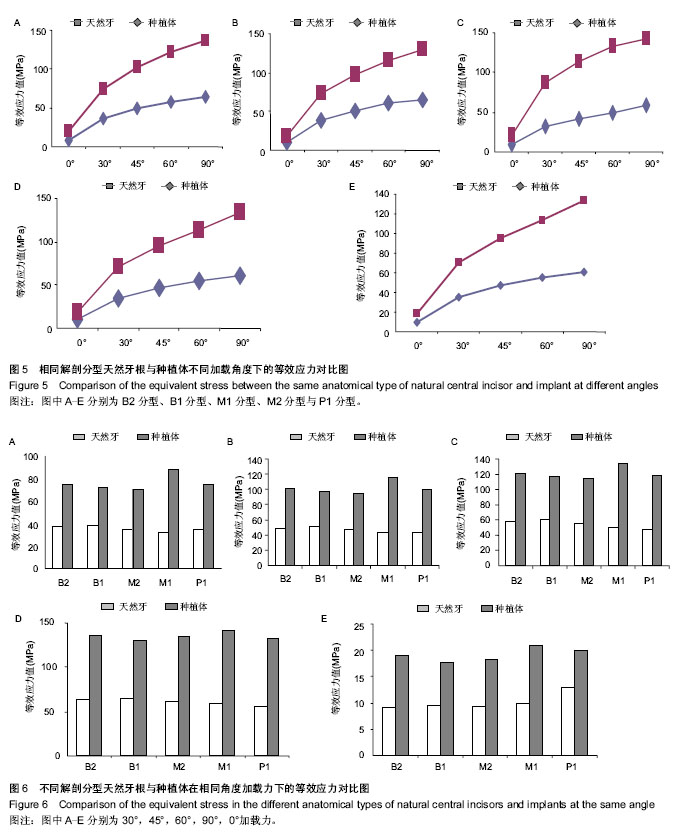| [1] |
Chen Xinmin, Li Wenbiao, Xiong Kaikai, Xiong Xiaoyan, Zheng Liqin, Li Musheng, Zheng Yongze, Lin Ziling.
Type A3.3 femoral intertrochanteric fracture with augmented proximal femoral nail anti-rotation in the elderly: finite element analysis of the optimal amount of bone cement
[J]. Chinese Journal of Tissue Engineering Research, 2021, 25(9): 1404-1409.
|
| [2] |
Cai Qunbin, Zou Xia, Hu Jiantao, Chen Xinmin, Zheng Liqin, Huang Peizhen, Lin Ziling, Jiang Ziwei.
Relationship between tip-apex distance and stability of intertrochanteric femoral fractures with proximal femoral anti-rotation nail: a finite element analysis
[J]. Chinese Journal of Tissue Engineering Research, 2021, 25(6): 831-836.
|
| [3] |
Song Chengjie, Chang Hengrui, Shi Mingxin, Meng Xianzhong.
Research progress in biomechanical stability of lateral lumbar interbody fusion
[J]. Chinese Journal of Tissue Engineering Research, 2021, 25(6): 923-928.
|
| [4] |
Liu Zhao, Xu Xilin, Shen Yiwei, Zhang Xiaofeng, Lü Hang, Zhao Jun, Wang Zhengchun, Liu Xuzhuo, Wang Haitao.
Guiding role and prospect of staging and classification combined collapse prediction method for osteonecrosis of femoral head
[J]. Chinese Journal of Tissue Engineering Research, 2021, 25(6): 929-934.
|
| [5] |
Chen Lu, Zhang Jianguang, Deng Changgong, Yan Caiping, Zhang Wei, Zhang Yuan.
Finite element analysis of locking screw assisted acetabular cup fixation
[J]. Chinese Journal of Tissue Engineering Research, 2021, 25(3): 356-361.
|
| [6] |
Shu Qihang, Liao Yijia, Xue Jingbo, Yan Yiguo, Wang Cheng.
Three-dimensional finite element analysis of a new three-dimensional printed porous fusion cage for cervical vertebra
[J]. Chinese Journal of Tissue Engineering Research, 2021, 25(24): 3810-3815.
|
| [7] |
Zhu Yun, Chen Yu, Qiu Hao, Liu Dun, Jin Guorong, Chen Shimou, Weng Zheng.
Finite element analysis for treatment of osteoporotic femoral fracture with far cortical locking screw
[J]. Chinese Journal of Tissue Engineering Research, 2021, 25(24): 3832-3837.
|
| [8] |
Liu Jinyu, Ding Yiwei, Lu Zhengcao, Gao Tianjun, Cui Hongpeng, Li Wen, Du Wei, Ding Yu.
Finite element biomechanical study of full endoscopic fenestration decompression for cervical spondylotic myelopathy
[J]. Chinese Journal of Tissue Engineering Research, 2021, 25(24): 3850-3854.
|
| [9] |
Qin Wan’an, Cai Zhouyu, Wei Gejin, Lin Zhoudan.
Finite element analysis of absorbable screws and ethibond sutures for the treatment of humerus shaft fractures caused by grenade throwing
[J]. Chinese Journal of Tissue Engineering Research, 2021, 25(24): 3855-3859.
|
| [10] |
Huo Hua, Cheng Yuting, Zhou Qian, Qi Yuhan, Wu Chao, Shi Qianhui, Yang Tongjing, Liao Jian, Hong Wei.
Effects of drug coating on implant surface on the osseointegration
[J]. Chinese Journal of Tissue Engineering Research, 2021, 25(22): 3558-3564.
|
| [11] |
Cai Qunbin, Yang Lijuan, Li Qiumin, Chen Xinmin, Zheng Liqin, Huang Peizhen, Lin Ziling, Jiang Ziwei .
Feasibility of internal fixation removal of intertrochanteric fractures in elderly patients based on fracture mechanics
[J]. Chinese Journal of Tissue Engineering Research, 2021, 25(21): 3313-3318.
|
| [12] |
Wei Yuanbiao, Guo Huizhi, Zhang Shuncong.
Finite element analysis of cortical bone trajectory screw fixation on adjacent segments
[J]. Chinese Journal of Tissue Engineering Research, 2021, 25(18): 2799-2804.
|
| [13] |
Qu Xingyue, Zhou Jianqiang, Xu Xuebin, Zhang Shaojie, Li Zhijun, Wang Xing.
Finite element analysis of screw-bone anti-pullout in four models of anterior lower cervical fixation in children
[J]. Chinese Journal of Tissue Engineering Research, 2021, 25(18): 2816-2821.
|
| [14] |
Ruan Hanjiang, Jin Genyang, Li Xinwu, Yao Jian, Wu Peng, Zhang Yin, Zhang Shuai, Xiao Jun .
Biomechanical properties of three types of posterior single-segment fixation for type II Hangman’s fracture
[J]. Chinese Journal of Tissue Engineering Research, 2021, 25(15): 2309-2314.
|
| [15] |
Fan Zhirong, Su Haitao, Zhou Lin, Huang Huida, Zhou Junde, Jiang Tao, Liu Zitao.
Finite element analysis of novel femoral neck system for unstable femoral neck fractures
[J]. Chinese Journal of Tissue Engineering Research, 2021, 25(15): 2321-2328.
|

